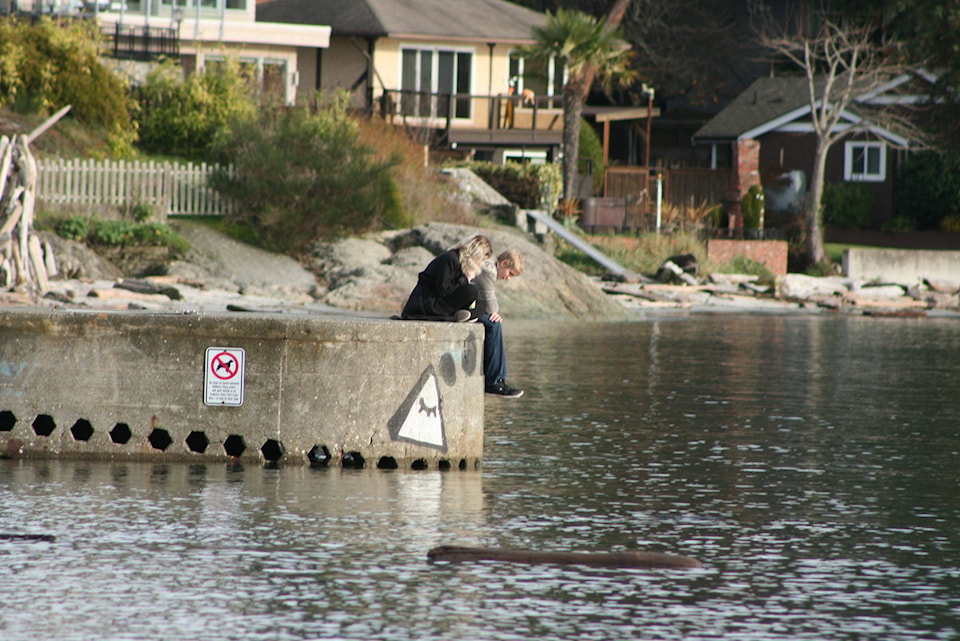Get ready for hotter, but also more variable weather as climate change affects the Greater Victoria area. That is upshot of a new study released Thursday into the regional effects of climate change that warns of significant water shortages and “a very different lived experience.”
While the region “could see increased agricultural capacity and opportunities for a larger agricultural economy,” the report suggests these improvements may likely prove illusory.
“These positive conditions will be challenged by a decrease in summer water levels in ponds, wetlands, and streams used for irrigation, and increases in competition for water, heat stress and sun scald on plants, invasive species, pests, and plant diseases,” according to the report prepared by the Capital Regional District.
In fact, the report notes that the “availability of water for agricultural use is likely to become a significant issue in the future.”
As a forward-looking document, the report offers expectations not iron-clad guarantees. If so, the report gives considerable pause. “These changes will not always happen consistently over the region or over time, as seasonal and yearly variations will occur,” it read. “For most variables, projected change appears somewhat different from the past by the 2050s. By the 2080s, projections indicate substantial changes, resulting in a very different lived experience than the capital region of today. “
Using a series of models, the study seeks to spell out the most robust projections in guiding planning. While it considers a range of project models, they all predict the same time: an average annual warming of about about 3°C in the region by the 2050s.
“While temperature can be expected to increase year round, the greatest increases will occur in the summer months,” it read. Specifically, it predicts that the summer days of 25°C to triple, from an average of 12 to 36 days per year. Rising temperatures will not only to lead to hotter summer days and nights, but also milder winters with the near loss of frost days and snowpack in all but the highest elevation locations in the region.
“By the 2050s, we can expect to see the warmest winter day temperature rise from 12°C to about 15°C,” it read. “This value may increase to about 17°C by the 2080s.”
The report also predicts a modest increase in annual precipitation by the 2050s, with the increase in precipitation occurring unevenly over the seasons.
“The largest increases will occur in the fall season, while rain will decrease significantly in the summer months,” it read. “Our region can expect stronger and more frequent extreme rainfall events, longer summer dry spells, and an extension of the dry season into September.”
This finding in turn points to the greater weather variability confronting current and future residents in the Greater Victoria area. “We are on a path towards rising temperatures and increased variability in precipitation, and these changes will be experienced unevenly over the seasons, and from year to year,” it read. “We can expect some winters will be warm, while others could be cold, and some summers could be wet and cold, while others could be hot and dry. Adaptation measures will need to consider the inherent complexity and variability of projected changes to the climate in the region.”
Projected warming will have implications for human health. Periods of heat can worsen respiratory illnesses that particulates and compounds cause, the report noted. “Impacts have the potential to be more significant in urban centres due to urban heat island effect, unless adaptive measures are taken, including air conditioning, cooling stations, and an increase in the urban tree cover,” it read. Higher year-round temperatures can also raise the potential for vector-borne diseases.
Serious challenges also await the regional infrastructure. “Extreme precipitation events can cause inflow and infiltration of rainwater into our sanitary system in crossover areas. This could exceed the capacity of infrastructure and cause highly diluted sewage to enter our waterways,” it read. Notably, the report suggests that the region might not be ready.
“The projected increase in the intensity, duration, and frequency of rainfall events may be beyond those for which we are currently prepared, and can have a wide range of impacts to natural and built systems dealing with water flows and sewage,” it read in hinting at potentially expensive infrastructure upgrades.
Higher temperatures likely also mean increased evaotranspiration, potential increases in wildfire activity, and a reduction in rainfall which can lead to spikes in water demand well into September, when supply is lowest. “
Given the potential for this seasonal decline in water supplies to become more pronounced in some years, water conservation initiatives will remain a priority in the region,” it read. “It will be important to consider how to better capture and store wet-season precipitation and to improve the efficiency of summer outdoor water use.”
These last two points of course point to one of perceived paradoxes of climate change. It can cause sudden, singular spikes in water flows that overwhelm urban infrastructure, then leave residents high and dry. The Okanagan is currently experiencing the first half of that equation.
Climate change will also have implications for the urban environment. “As our climate warms and storm events become more intense and frequent, the business case for investing in durable, resilient buildings improves,” it reads. “Buildings provide site-specific opportunities to address challenges, such as heat and drought, through technologies, including rainwater capture and reuse, stormwater detention and management, resilient landscaping, green roofs and walls, and passive shading.”
The report also calls for measures that increase urban density and avoid the conversion of agricultural land to residential and commercial uses to ensure the region becomes more self-reliant — read: food secure — as traditional agricultural areas become less arable.



